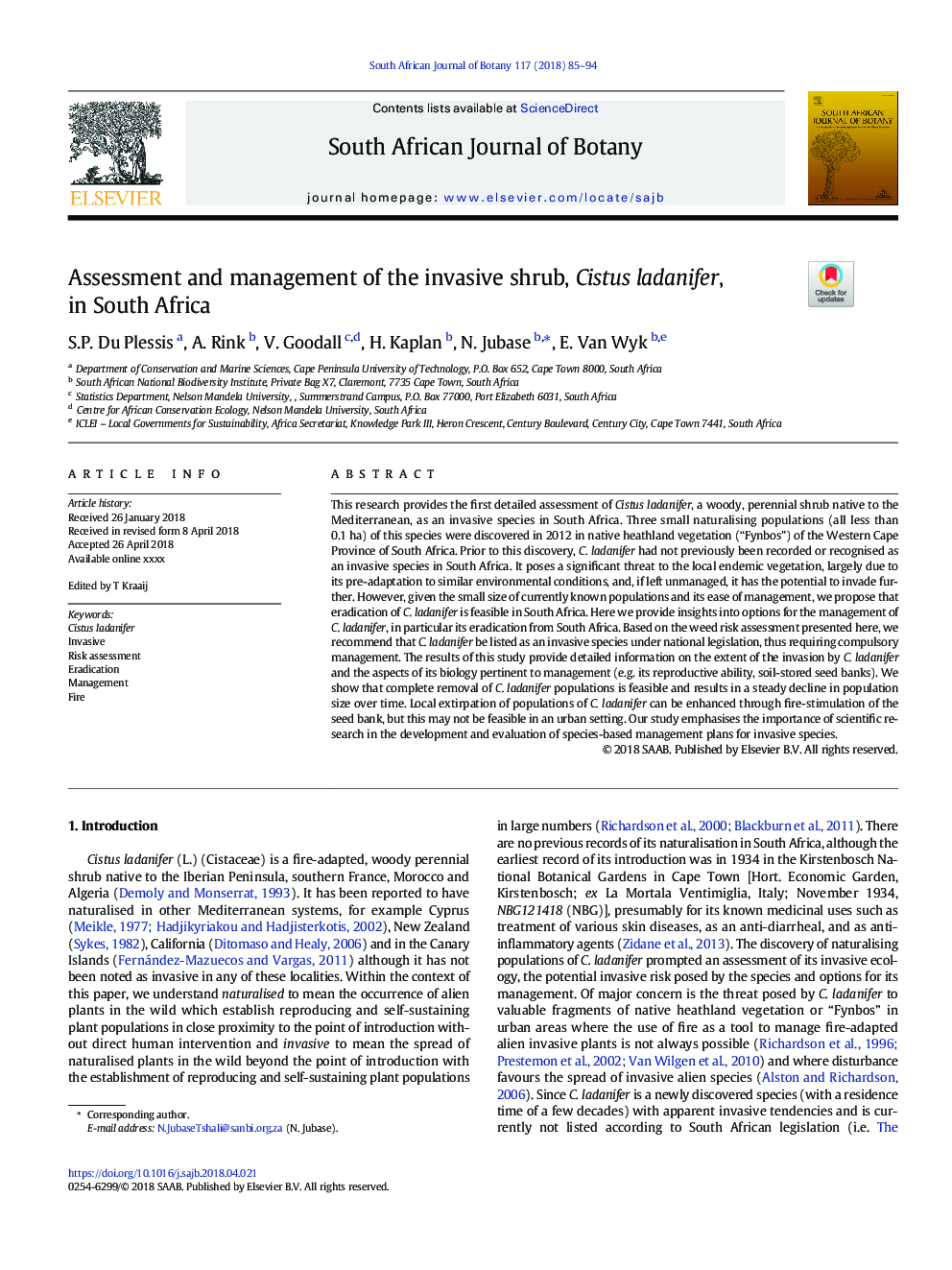| Article ID | Journal | Published Year | Pages | File Type |
|---|---|---|---|---|
| 8882252 | South African Journal of Botany | 2018 | 10 Pages |
Abstract
This research provides the first detailed assessment of Cistus ladanifer, a woody, perennial shrub native to the Mediterranean, as an invasive species in South Africa. Three small naturalising populations (all less than 0.1â¯ha) of this species were discovered in 2012 in native heathland vegetation (“Fynbos”) of the Western Cape Province of South Africa. Prior to this discovery, C. ladanifer had not previously been recorded or recognised as an invasive species in South Africa. It poses a significant threat to the local endemic vegetation, largely due to its pre-adaptation to similar environmental conditions, and, if left unmanaged, it has the potential to invade further. However, given the small size of currently known populations and its ease of management, we propose that eradication of C. ladanifer is feasible in South Africa. Here we provide insights into options for the management of C. ladanifer, in particular its eradication from South Africa. Based on the weed risk assessment presented here, we recommend that C. ladanifer be listed as an invasive species under national legislation, thus requiring compulsory management. The results of this study provide detailed information on the extent of the invasion by C. ladanifer and the aspects of its biology pertinent to management (e.g. its reproductive ability, soil-stored seed banks). We show that complete removal of C. ladanifer populations is feasible and results in a steady decline in population size over time. Local extirpation of populations of C. ladanifer can be enhanced through fire-stimulation of the seed bank, but this may not be feasible in an urban setting. Our study emphasises the importance of scientific research in the development and evaluation of species-based management plans for invasive species.
Related Topics
Life Sciences
Agricultural and Biological Sciences
Agronomy and Crop Science
Authors
S.P. Du Plessis, A. Rink, V. Goodall, H. Kaplan, N. Jubase, E. Van Wyk,
